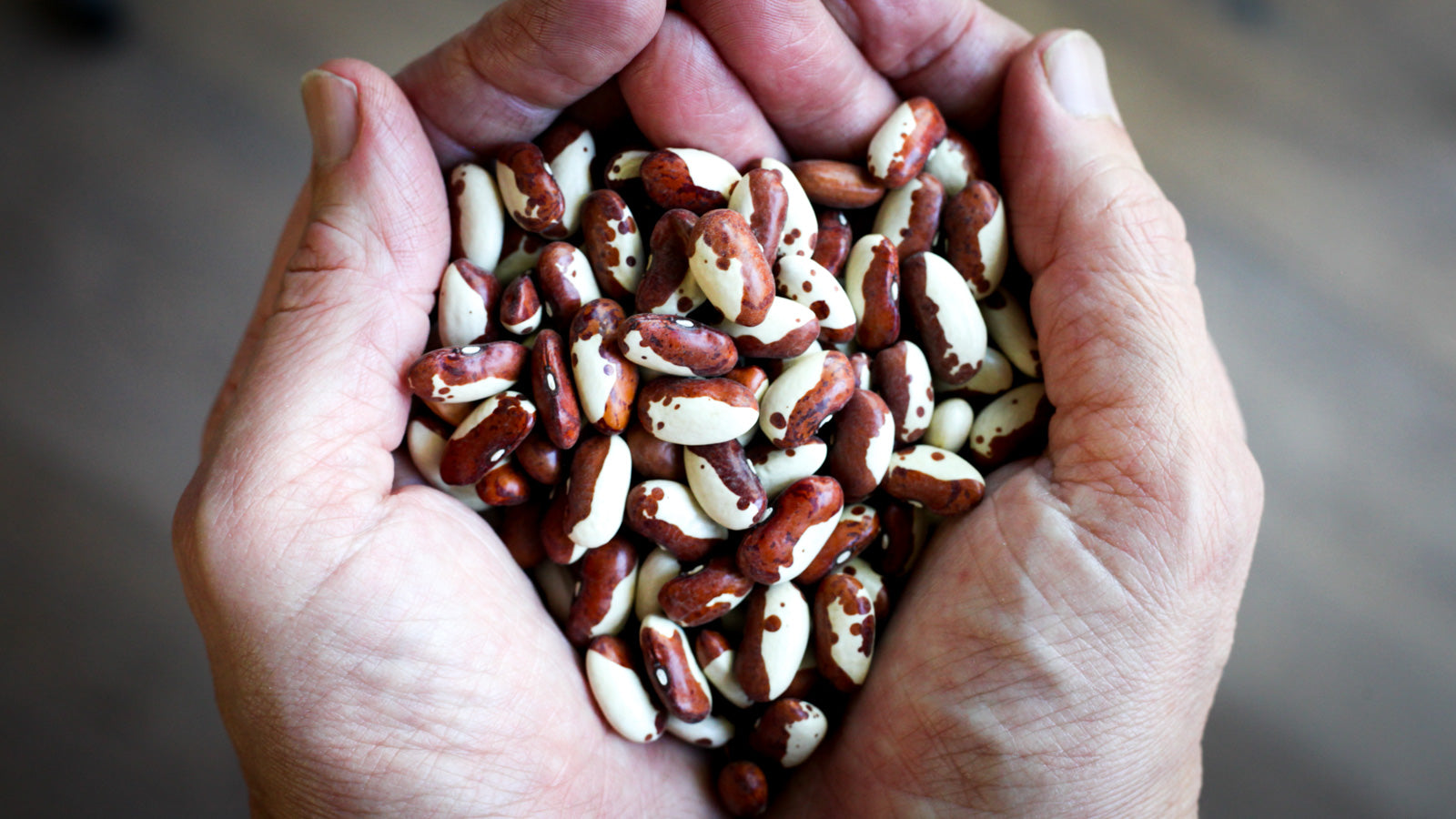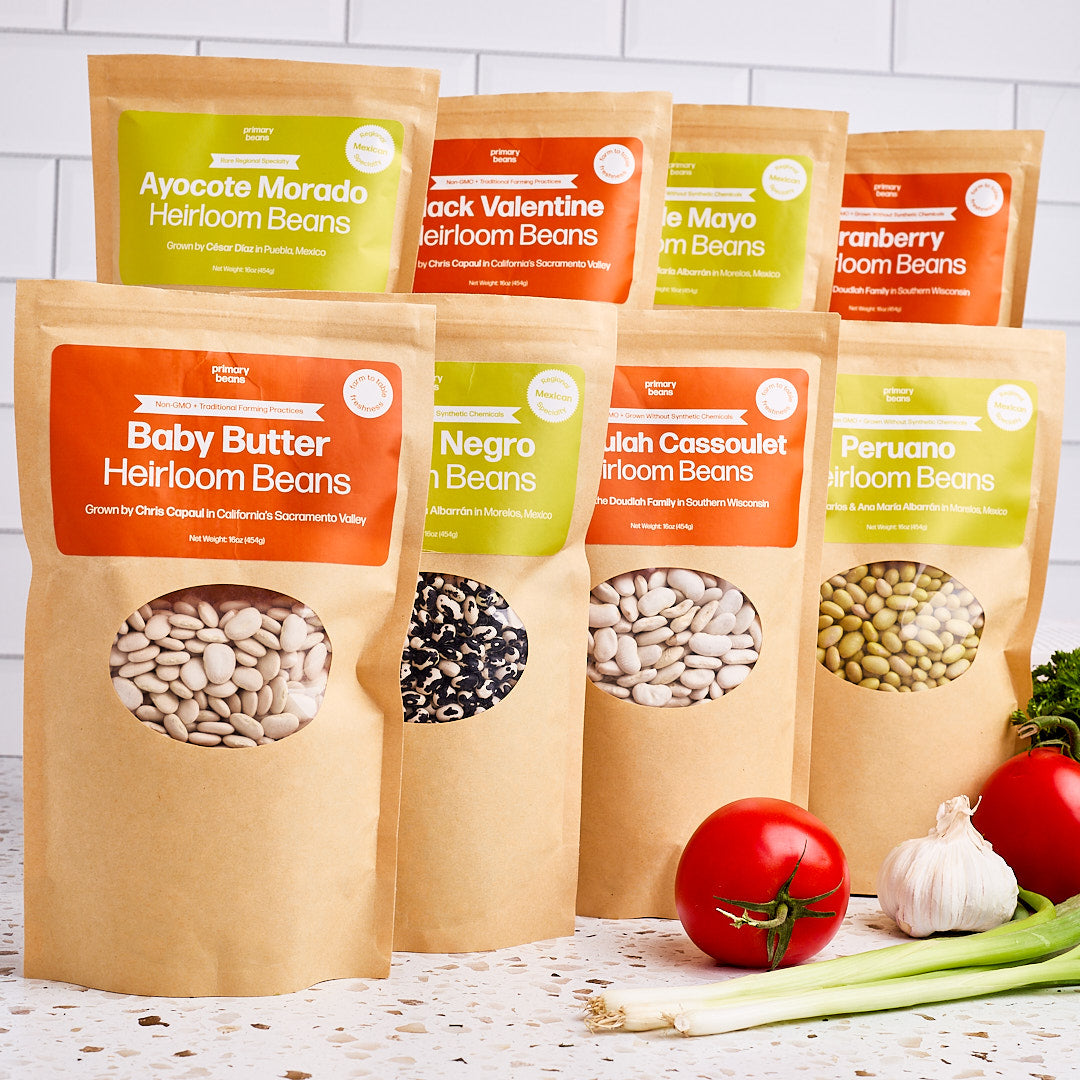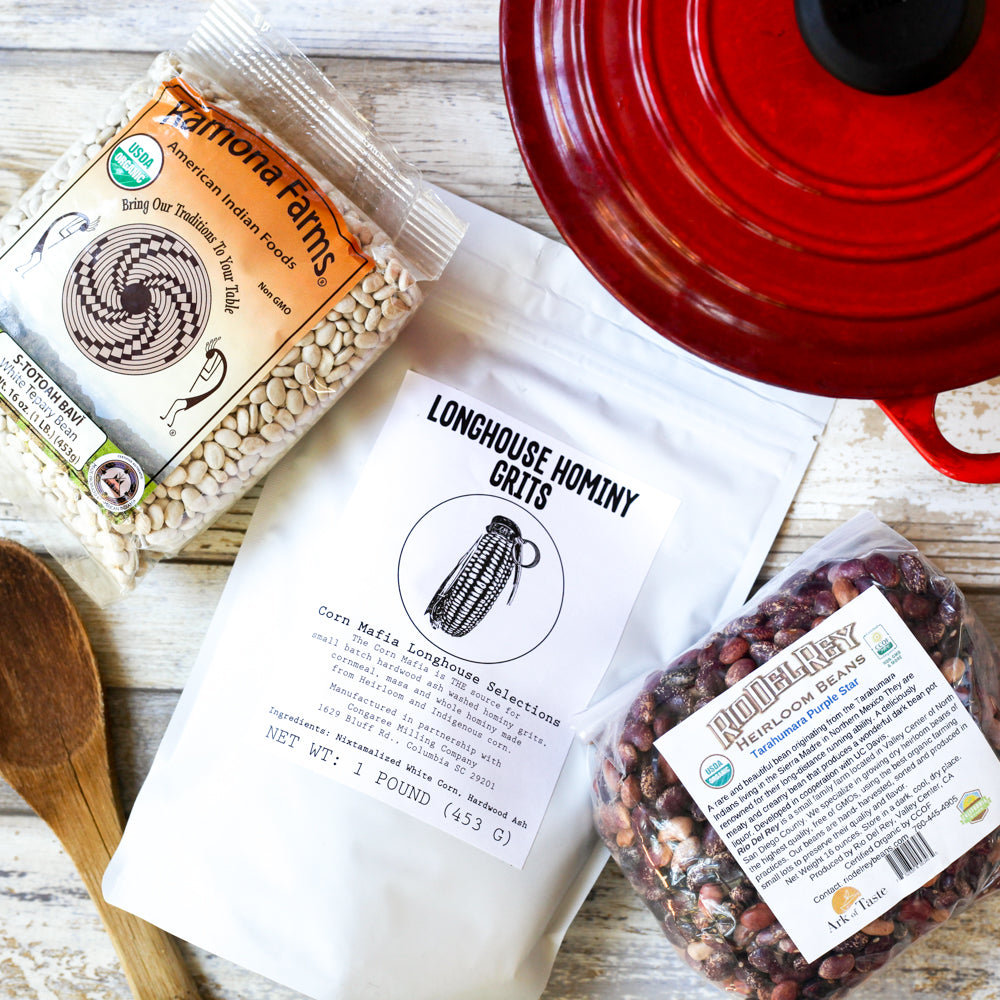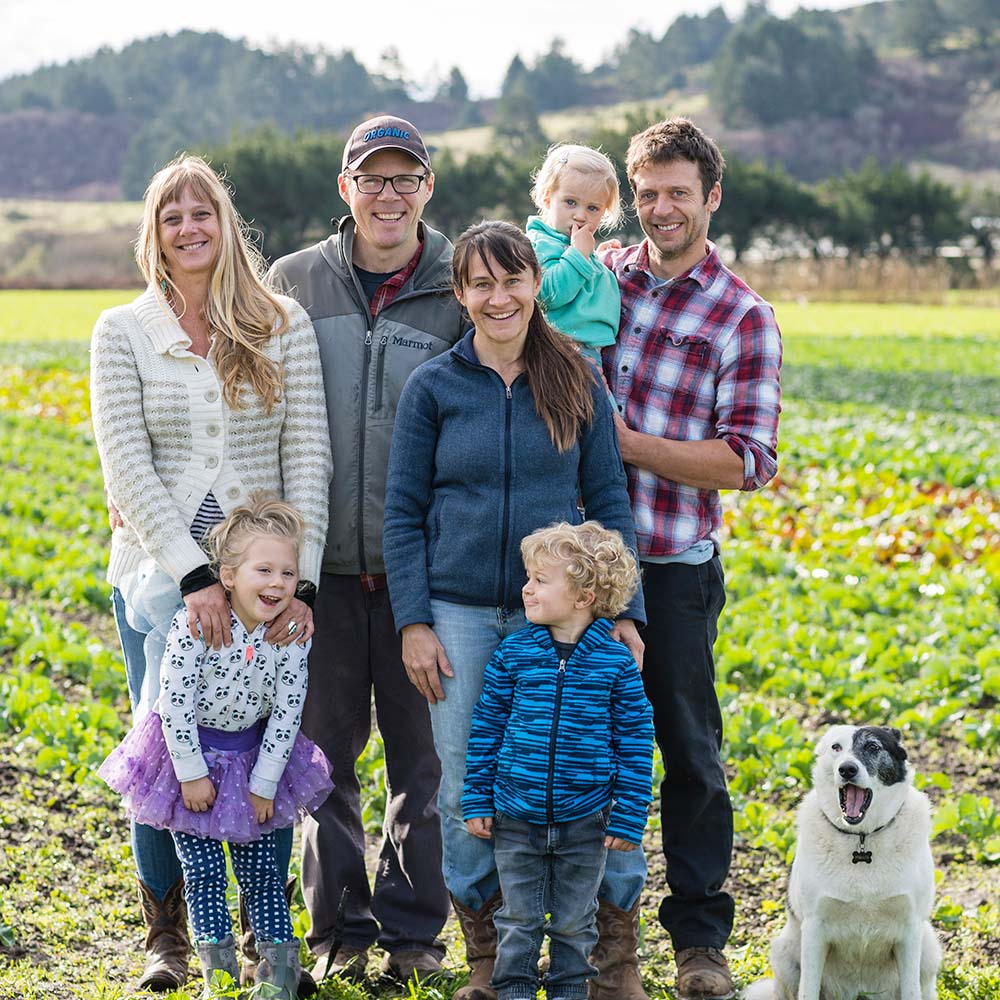10.99 FLAT RATE SHIPPING
10.99 FLAT RATE SHIPPING
SHOP

Can Eating Heirloom Beans Save The Planet?
April 18, 2022 5 min read
They are beautiful to behold and delicious to eat, but could eating heirloom beans really be a sustainable way to help the earth? With Earth Day upon us we wanted to ask just how green are heirloom beans?
From biodiversity to soil health and even combatting greenhouse gas, humble heirloom beans can be a mighty powerhouse in the battle to save our planet. They help with biodiversity, fix nitrogen in the soil and eliminate the need for animal based protein which contributes to greenhouse gas.
Read on to find out how heirloom beans grown on small farms combat the environmental effects of industrialized agriculture, while supporting small farmers and their soils.

What Are Heirloom Beans?
Most of the beans you find in the supermarket are what we would call commodity beans, they are grown on huge industrialized farms. The seeds they use were chosen for high yields, resistance to pests and how easy they are to harvest by machine. In other words they were chosen because they will yield the most profit, not because of any culinary or nutritional traits. Heirloom beans on the other hand have been selected by farmers and home gardeners for taste, color, texture and nutrient density, not profit margin. In our world of monocultures, GMOs and industrialized farming this means that the seeds have been saved by farmers and passed down from generation to generation, the way a family heirloom might be.

According to Gary Nabhan, founder of Native Seed Search, the ancient tepary bean could be a solution for the future of food just as it was in the past. He and 3 others founded the non-profit organization when Tohono O’odham tribal elders said “What we are really looking for are the seeds for the foods our grandparents used to grow.” One of the main ancestral food sources for O'odham and over 30 cultures was the tepary bean, a bean that was rescued from the brink of extinction. The tepary is unique because it has a very high protein content and is adapted to grow with very little rainfall. The seed pods have a tendency to open and scatter on the ground at harvest, making them less desirable for commercial farming so they fell out of favor and were almost forgotten. Thanks to the diligence and seed saving by the tribal community we are fortunate to have these precious beans still available today. Ramona and Terry Button brought the long lost tepary back to feed their people with a few seeds saved in an old trunk. Her efforts restored this important cultural icon and food security for her tribe. Today we can all enjoy white, black and brown tepary beans from Ramona Farms.
Although there is no concrete definition of what makes a plant an “heirloom,” according to EcoWatch, “heirloom seeds come from open-pollinated plants that pass on similar characteristics and traits from the parent plant to the child plant.” Because beans are one of the oldest food sources on the planet, these heritage seeds sometimes date back thousands of years, giving us a taste of the past.
Why should we care about growing heirloom fruits and vegetables?
Let’s take bananas for an example: there are over 1,000 varieties of bananas grown in the world, but only one kind shows up on our supermarket shelves: the Cavendish. In fact, this variety is so common that producers don’t even bother specifying that the bananas are from the Cavendish variety. The same goes for beans. There are over 400 varieties of beans on the planet yet we have a scant handful available in most grocery stores. According to the Food and Agriculture Organization of the United Nations, 95 percent of the world’s calories now come from 30 species.

Bio-diversity isn’t just about a lack of gourmet selections though. This is a direct reflection of our health and the health of our soils; we know that it’s important to eat a varied and balanced diet, because that way we take in more nutrients. The same goes for the soil; growing one seed variety over thousands of acres (also called a monoculture) causes a grave danger to our soils by overusing synthetic fertilizers/herbicides/insecticides, making our soils weaker and less nutrient-dense. Also, as soon as a strong, resistant disease hits those monocultures, the game is over – no more Cavendish bananas.
How Does Growing Heirloom Beans Help Soil Health?
Growing heirloom varieties give the soil a rest, especially when grown with other varieties around. Regenerative agriculture has become quite the buzz word this year in food yet it’s really an ancient indigenous practice. For centuries Native Americans have planted beans, corn and squash together, The Three Sisters, because of how they work together to give back to the earth and create a sustainable eco-system.
Heirloom beans plants help balance nitrogen levels in the soil and slowly regenerate soil to healthy levels, which means better, tastier, healthier crops and healthier biodiversity!
Not only are we improving the planet but also our own health by introducing new and varied kinds of veggies in our bodies. Beans are incredibly healthy! They are full of fibre, protein, iron, potassium and magnesium. Dan Buettner in his acclaimed Blue Zones series has researched foods that are associated wit longevity across the world and beans consistently come up on top as possibly the healthiest food you can eat.
Dry Heirloom Beans vs. Canned: The Eco-Trifecta
When it comes to sustainable living and eco-friendly foods, environmental impact doesn’t stop in the field. Although it is more convenient, a can of beans in the store has a bigger carbon footprint than a bag of dried beans.

Beans are harvested when they are dry. Dried beans are simply cleaned, sorted and packed into bags. Canned beans go through processing before being canned and shipped to the store. They need to be rehydrated and steamed in large commercial facilities. According to one analysis reported in Slate this requires approximately 1,500 BTUs of natural gas. The result is a product that is approximately 150 times heavier than dried beans which impacts transportation, resulting in more fuel use and more emissions.
Then of course there is the matter of the can. Creating the can itself is a whopping 55% of the carbon footprint of the finished product that ends up on the grocery store shelf. But it’s recyclable right? Probably not. It is estimated that 45% percentage of aluminum cans never get recycled, and if the can is lined then it will definitely be hitting the landfill. Even if it is recycled, the carbon footprint of recycling the can is considerably more than the small paper or plastic bag used for dried beans.

The Small Independent Farm Difference
Small farms like Kandarian Organic Farms are practicing no-till farming and regenerative practices that are unheard of in large scale commercial farms. Although coming from a small farm does not guarantee organic or regenerative practices it is much more likely, after all the land is their livelihood so they are very invested in treating it well. Buying directly from farms or as close to the farm as possible also cuts down on transportation, reducing the carbon footprint of those frijoles. Because famers like Ramona Farms, Fifth Crow Farms and Kandarian Farms ship directly to us, we are saving the environmental impact of shipping to processing plants and distribution facilities.
Where Can You Find Heirloom Beans?
If you want to add variety to your whole foods diet try the Chef’s Favorite Organic Bean Bundle or one of the unique varieties available from small, independent farms around the country featured in the Foodocracy Store.
You can use these beans as you would your favorite bean: stewed, blended, in tacos, burritos, rice, and delicious colorful salads! Need some inspiration? Check out all of our. heirloom bean recipes.
You can learn more about how we are supporting small farms and the environment with our Heirloom Bean and Grain Project.
Recent Articles
About Us
Foodocracy is dedicated to creating a more sustainable and independent food system. We support small, independent farms across the nation.
Get impossible to find beans and grains shipped direct to your doorstep each month from small family farms.
We support small, family owned farms across the nation. Did you know that farmers only make an average of 10 cents on every dollar you spend at the supermarket? Working directly with farms and not middle men ensures that more money goes back to the people actually growning your food.
Get 10% Off
Sign up for delicious recipes and special offers.
**Regularly priced items only.



